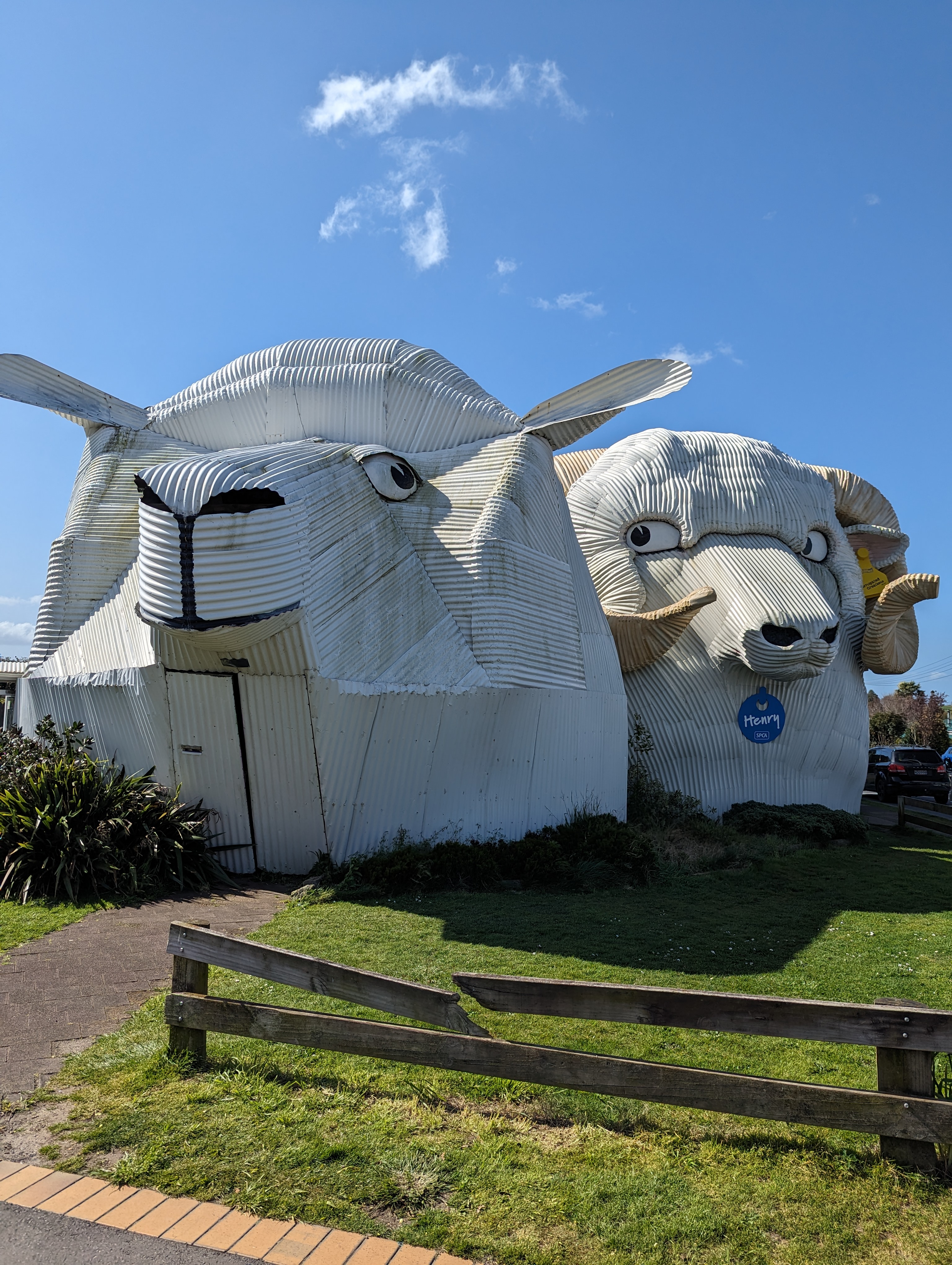We put our bags outside our door at 7:00 a.m. to be taken to the bus, and after another delicious breakfast at the VOCO, we were off on the road again.
We had a few stops along the way – the visitor’s center below in the town of Tirau was pretty classic. Everyone (but me – foot a bit sore) went shopping – most particularly for warm hats! (Lynn got 2 wonderful jackets – one made of merino wool, silk, and possum!) We were told at our home-hosted visit in a couple of days that it would be along the shore of Lake Rotorua for dinner and very cold. I had a couple of utility guys who were having a coffee leaning against their “Rotorua version of a PG&E truck” take the photos of me. One of them said “Tilt up your chin so he can lick ya!” That photo really makes me laugh.

?Moses? LOL

After Tirau, we were off to Hamilton Gardens. Hamilton Gardens has over twenty themed garden areas and we had an about 75 minute guided tour here. The land was recovered from a “tip” (dump). We had a very nice meal in the garden cafe, then were off to our next adventure.
Some photos of the various gardens – here is the Egyptian one:

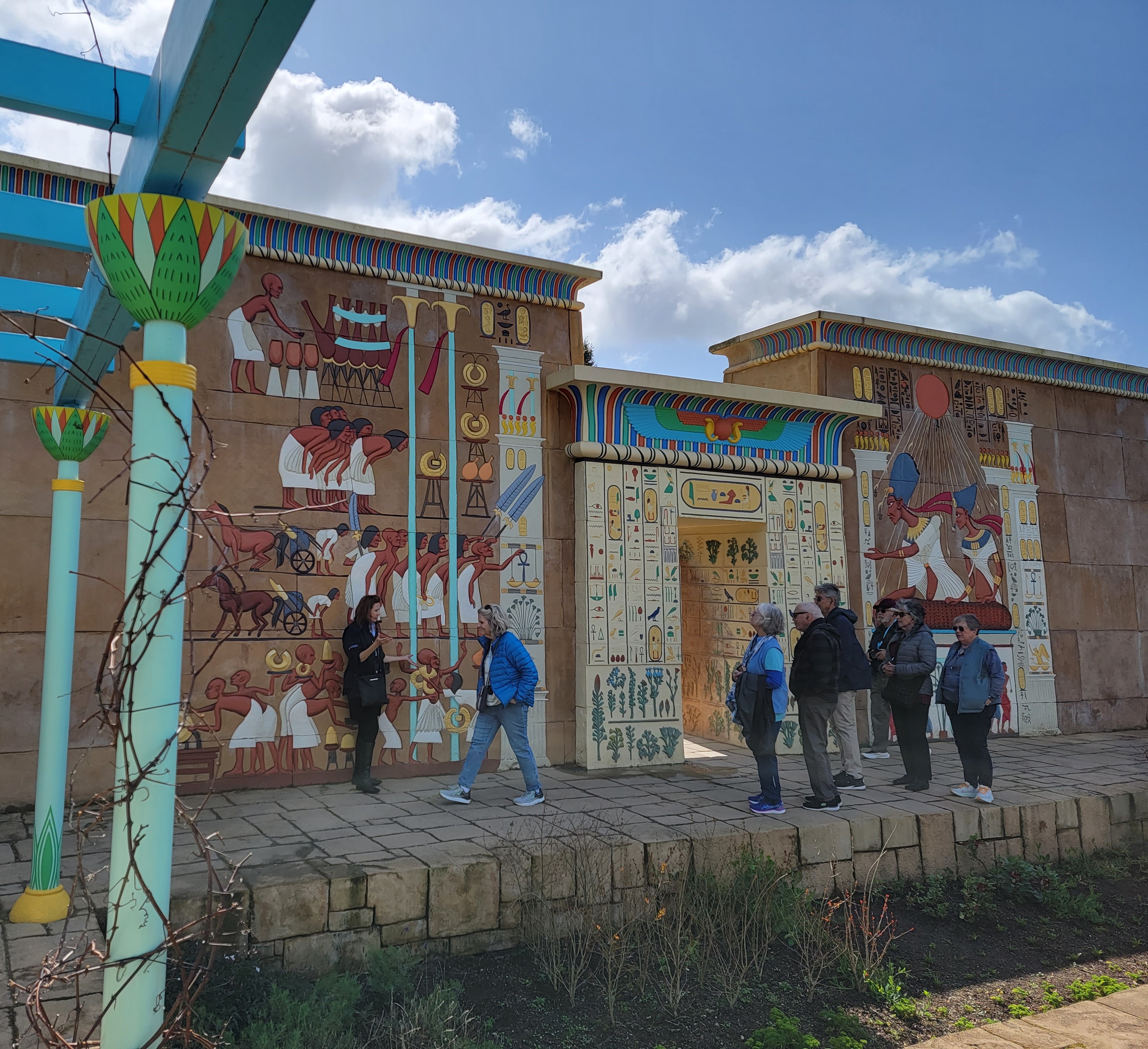
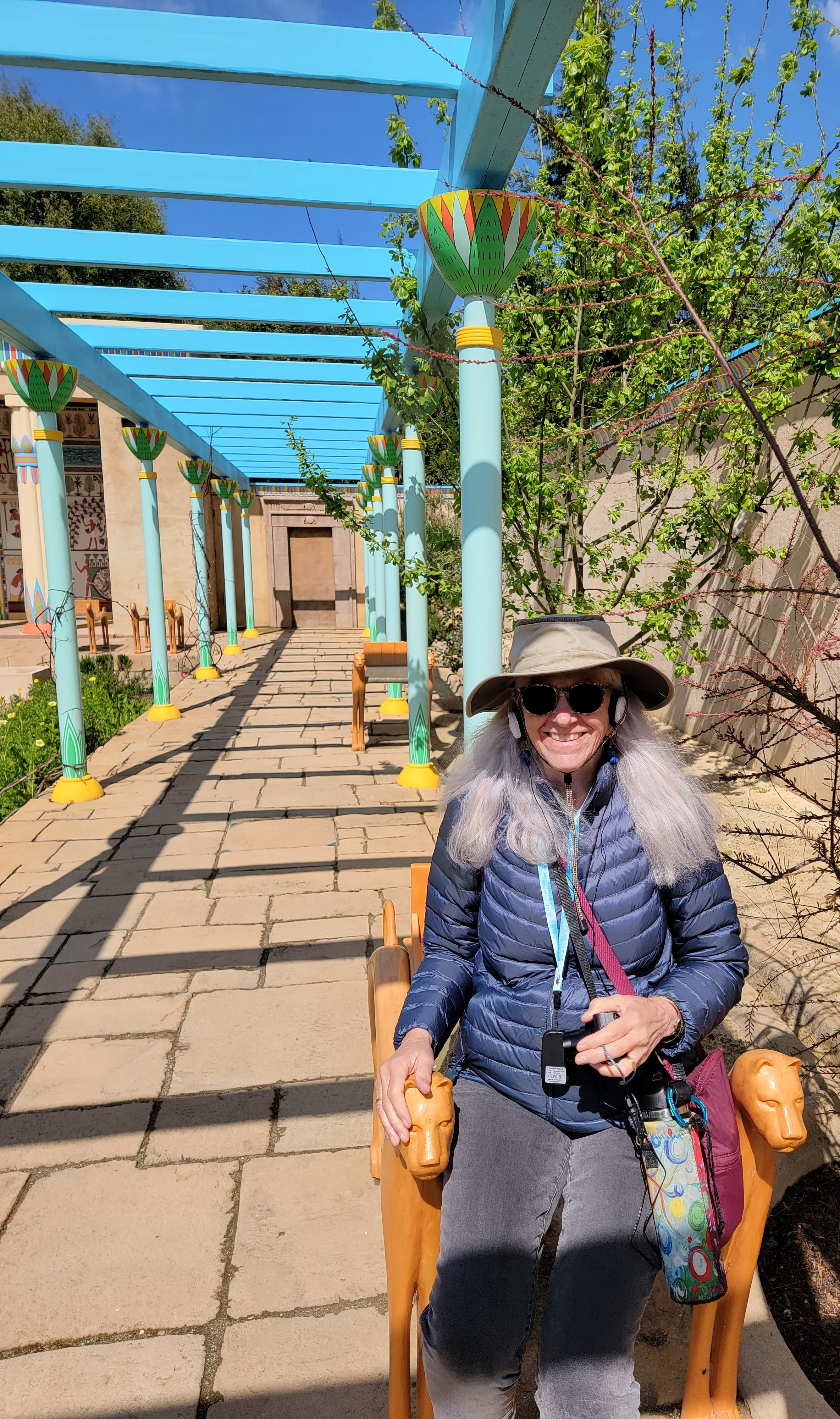
Here is the Indian “Char Bagh” garden – it’s coming out of winter so looks a bit straggly, but the flowers are positioned so when they grow, they look like a living Persian carpet. These gardens were poetic, secret pleasure gardens in which you could feel the breezes in the open-sided pavilion (this one looks down on the river), and enjoy the perfume of the garden:

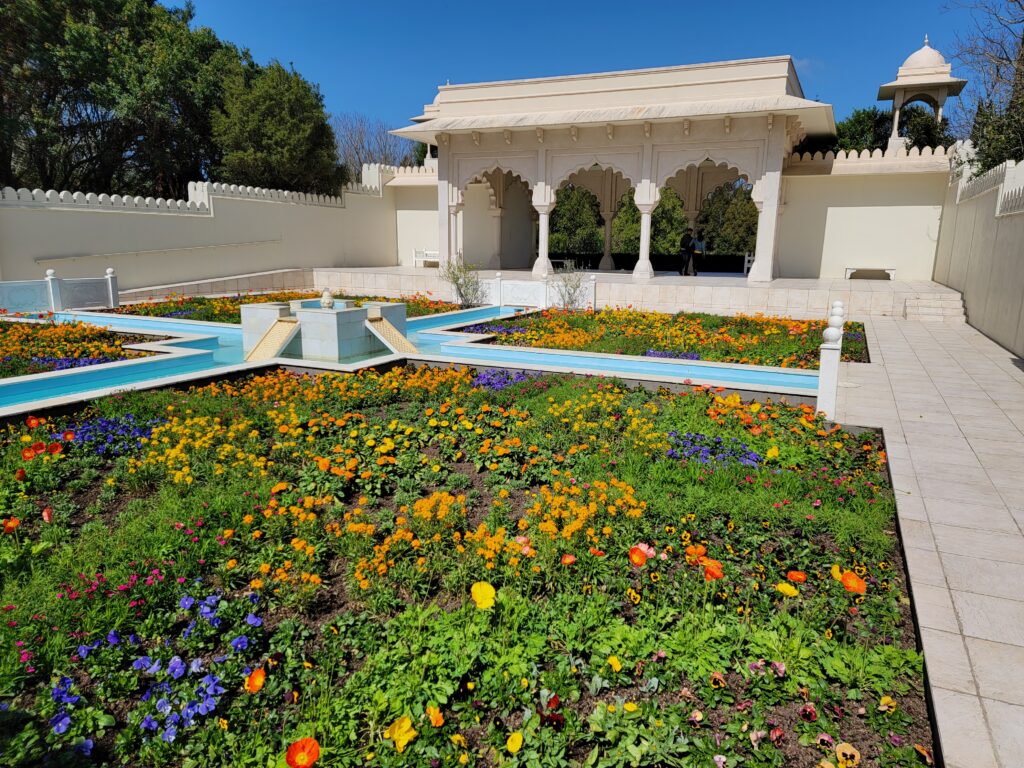
The English “knot” garden:
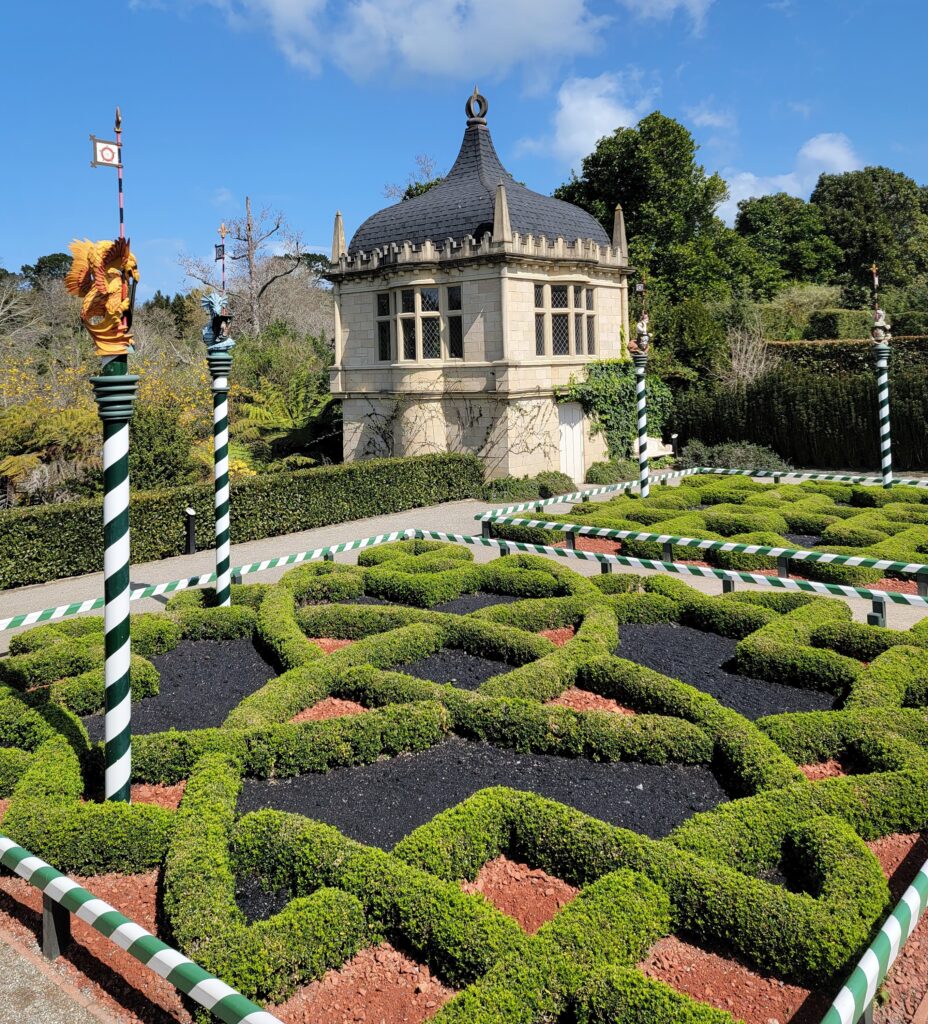
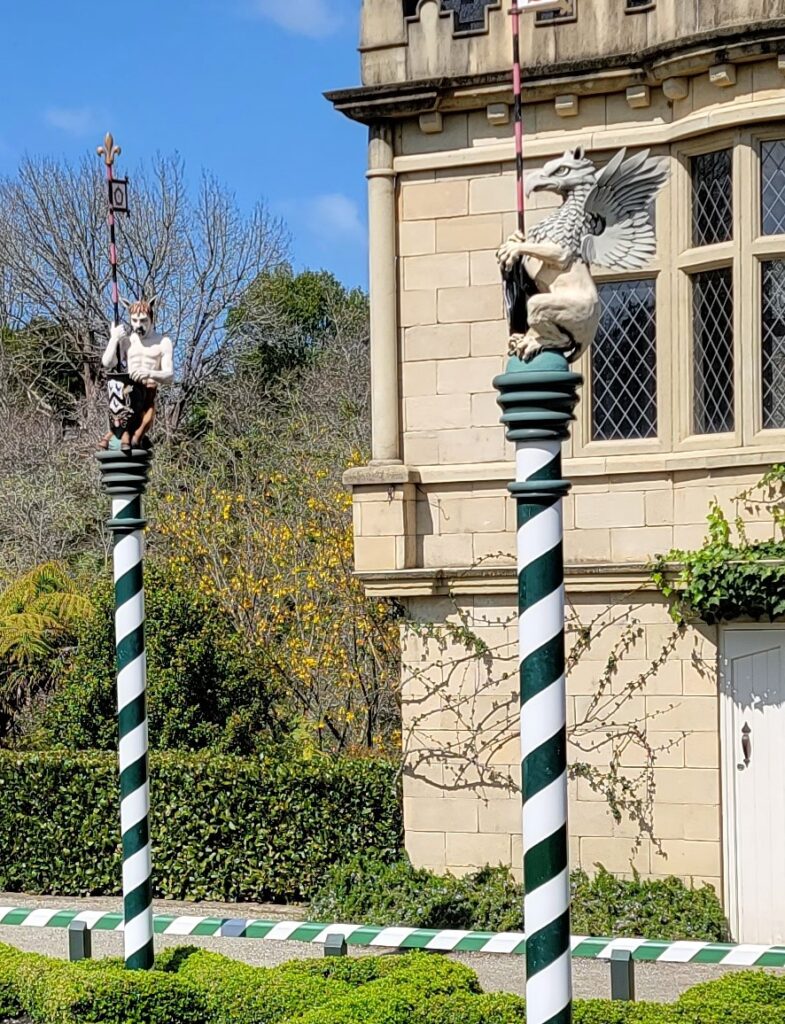
This is the Māori area. The soil mounds are traditional (and still used in this garden) for Kumara (sweet potatoes). The Māori brought the Kumara from Polynesia, but they struggled in the chilly weather. They were placed in the top of these mounds (with the roots facing Polynesia) which gave them more sun as it could hit the soil from all sides. The Kumara planted here are the ancient Polynesian variety. You can’t buy them commercially – the Māori use them for ceremonies and come and do a ceremony to plant them each year.

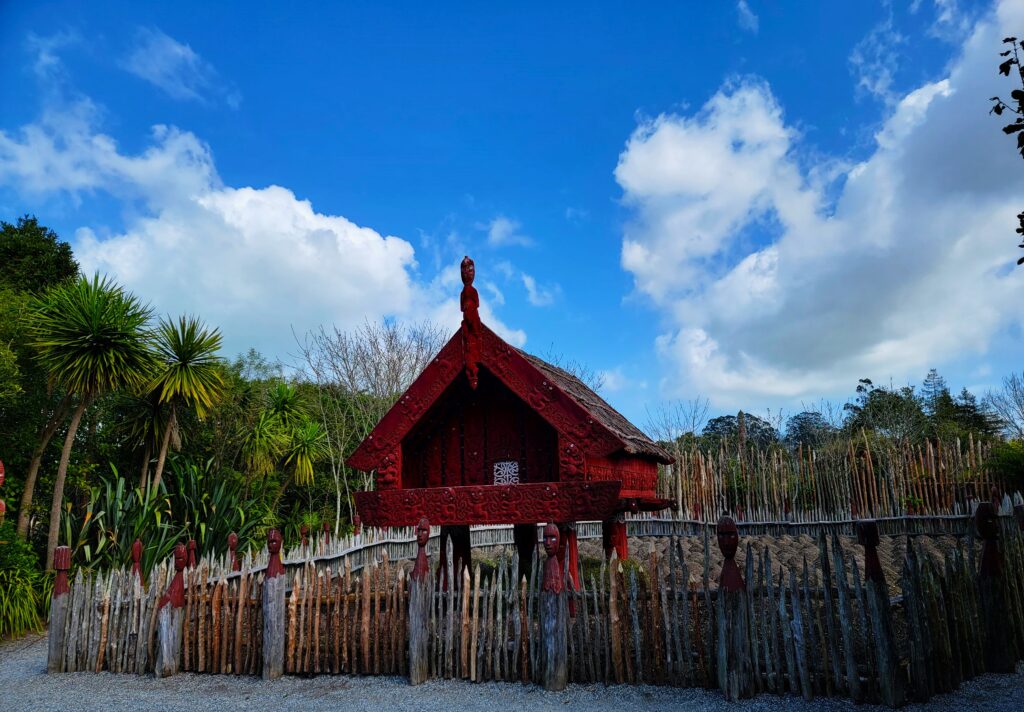

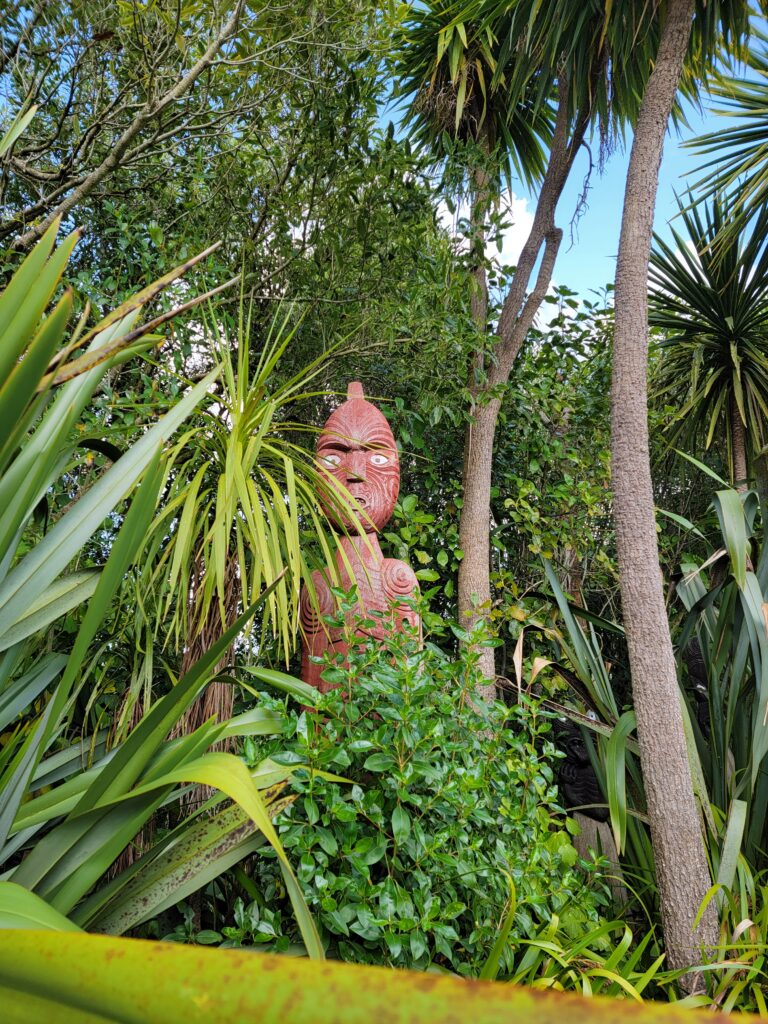

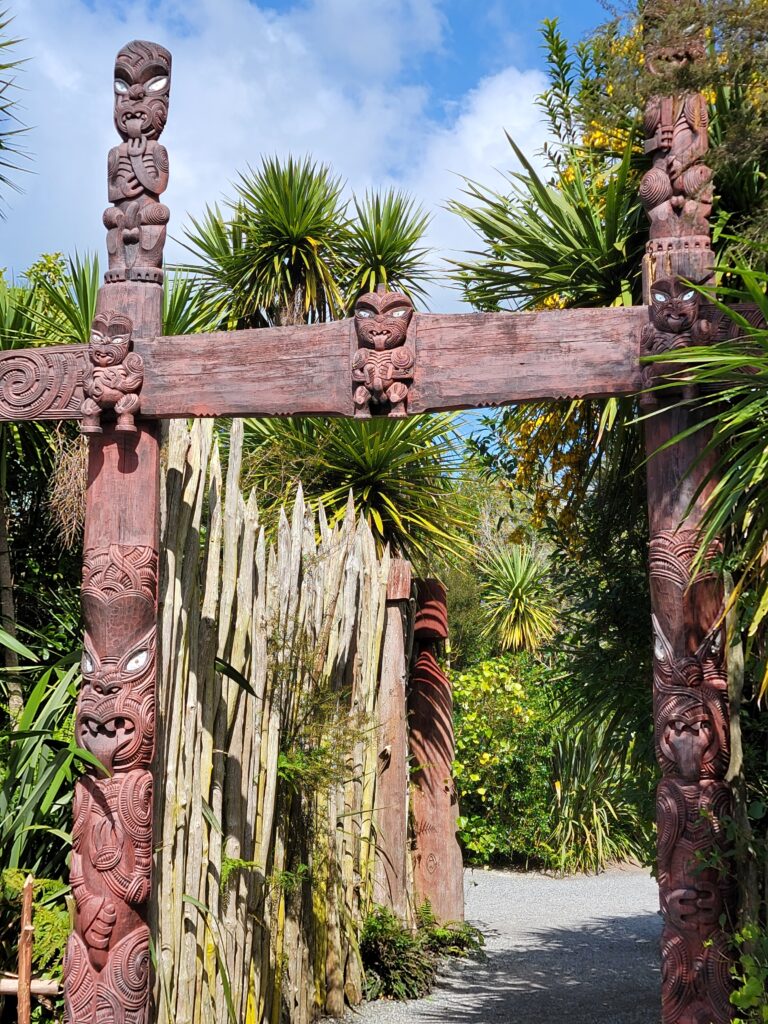
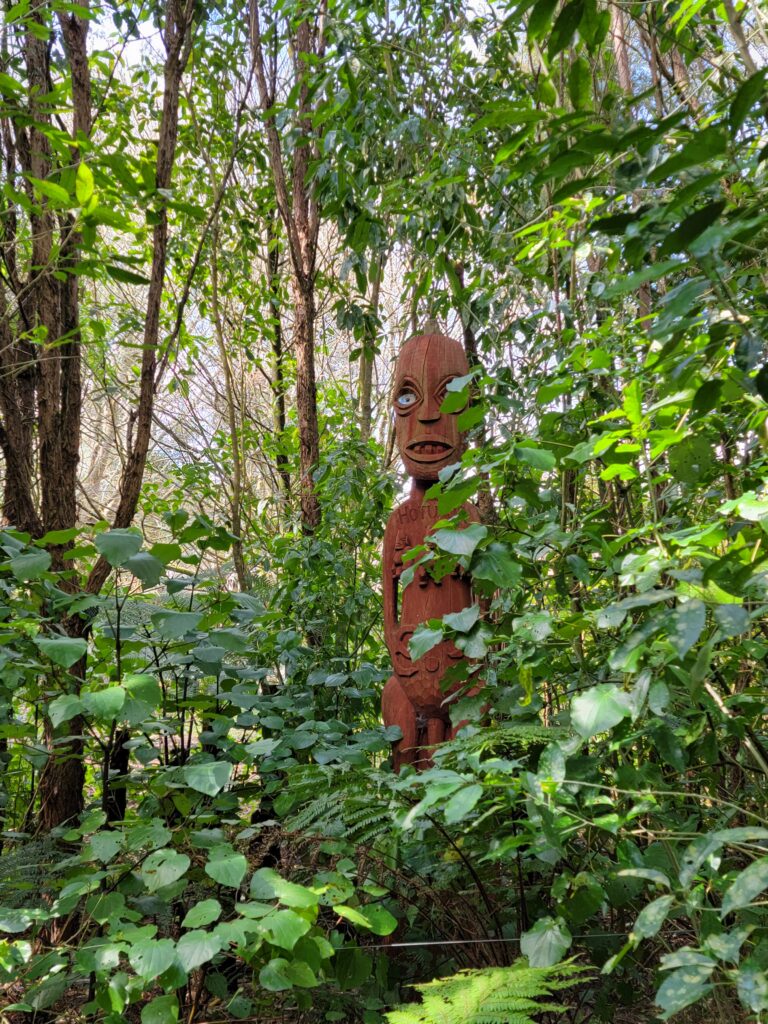
This arch looks down on their small outdoor amphitheater area:

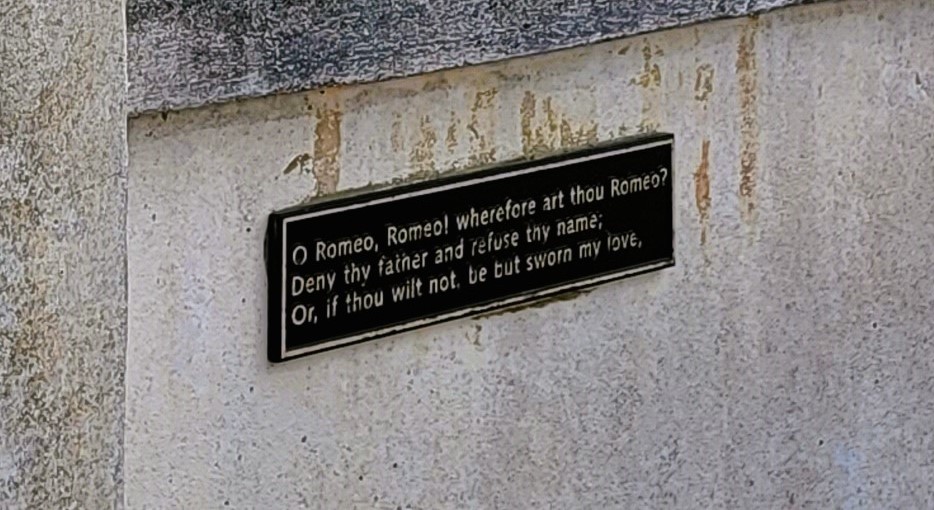
The “Surrealist” garden:
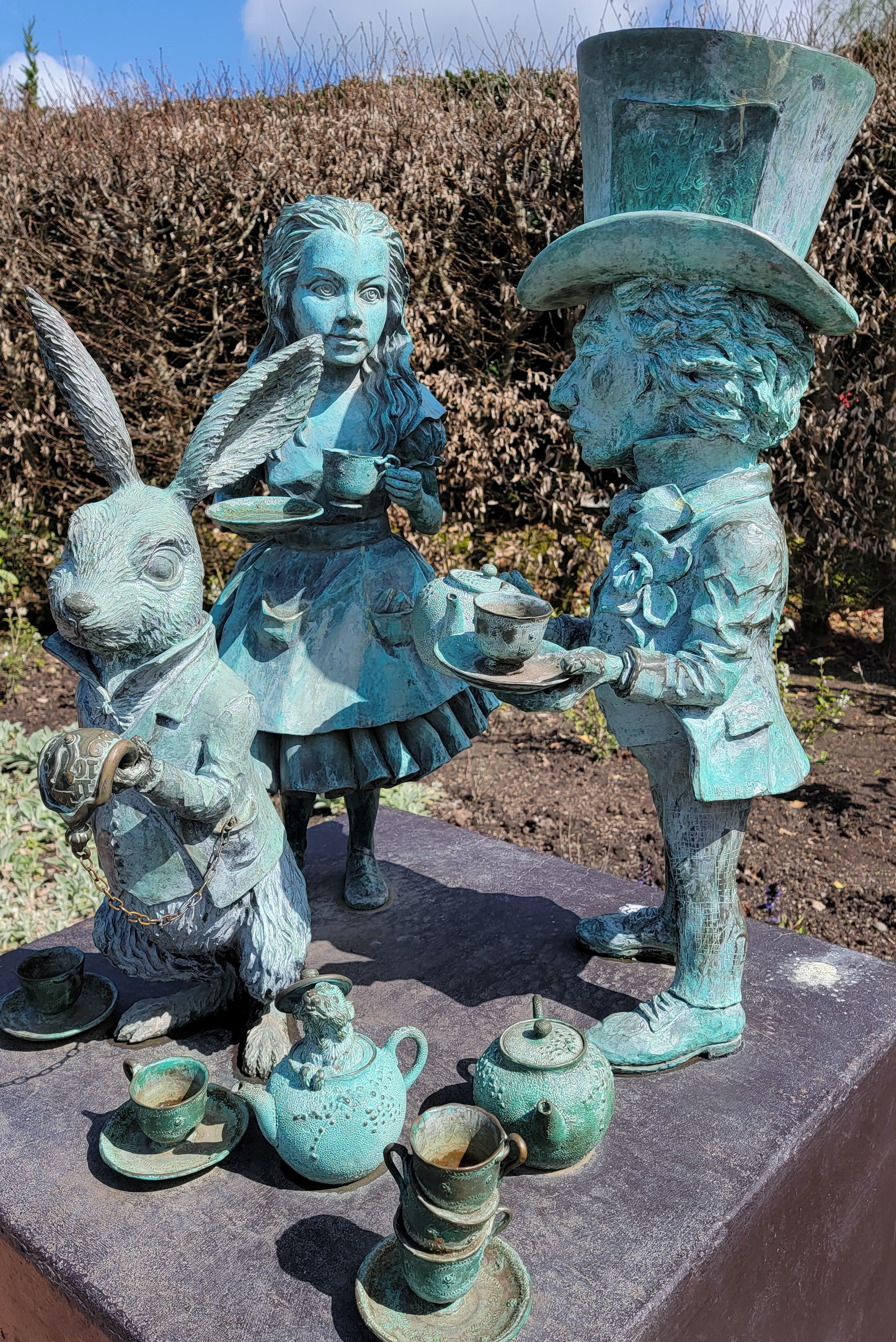

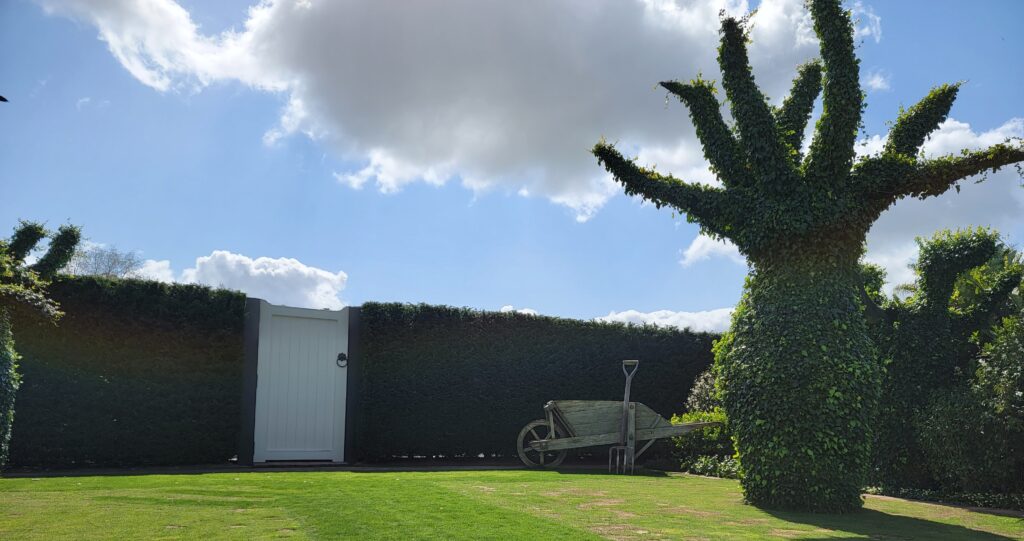
A scarecrow (they call them “straw men”) and a close-up of a mouse in his pocket. This sculpture was ordered from England and came with a wren on the shoulder – the artist re-made it when the Gardens said that they don’t have wrens with a New Zealand fantail.


Renaissance Garden:


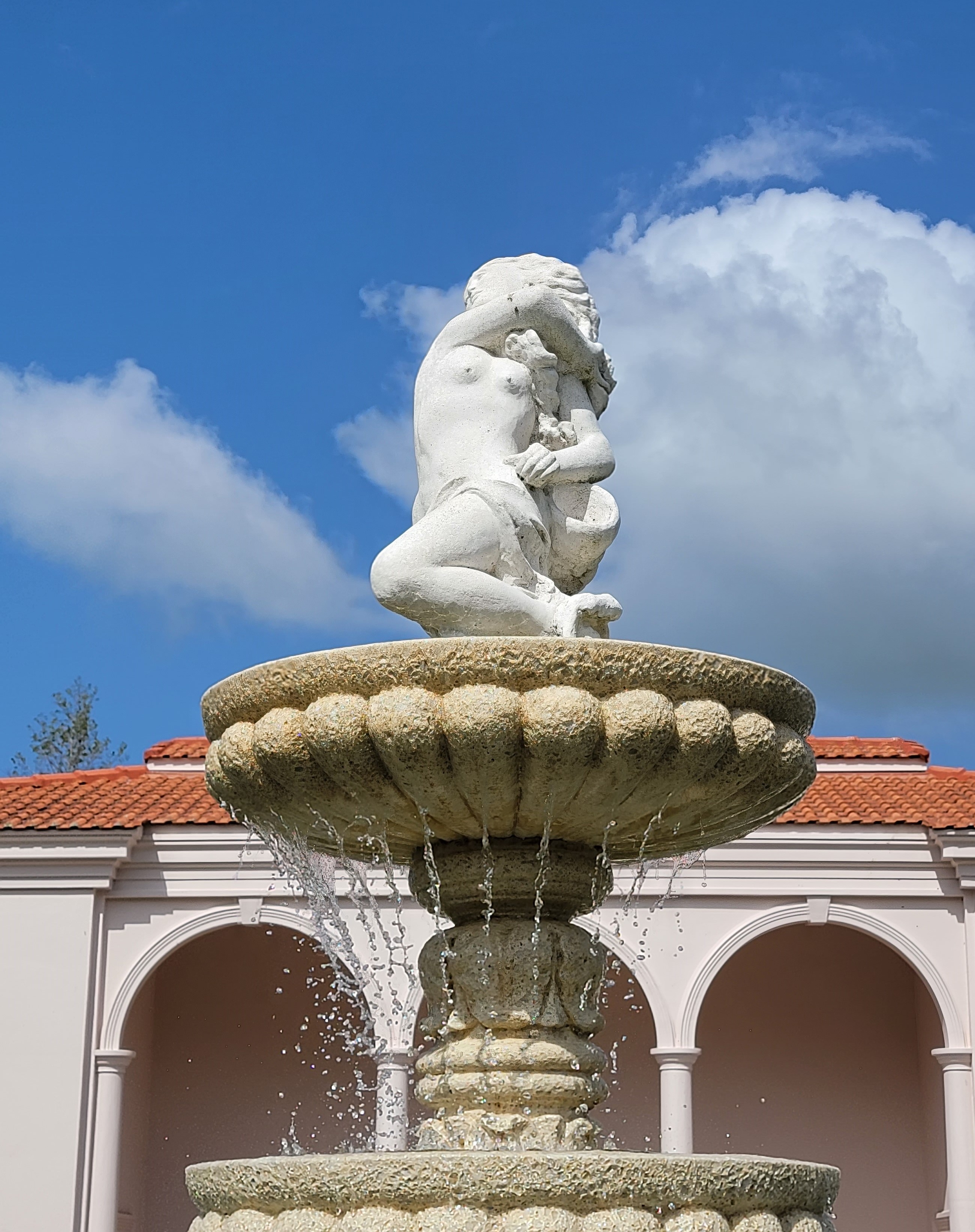
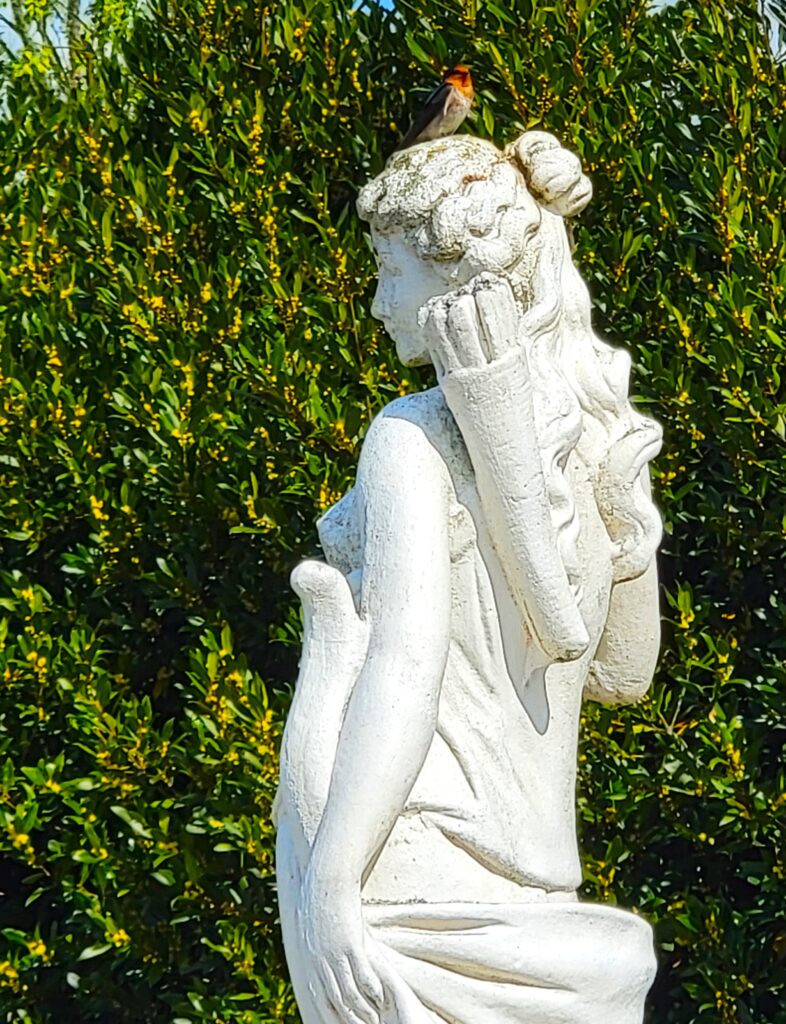
Elizabeth from our group next to one of the tree ferns – she’s not very tall, but they sure are! –

My favorite was the Japanese garden. (Note the small print on the sign as you go in – not sure what that’s about!) There is a dry garden, then you turn and the water garden was just so peaceful and lovely. I could have stayed there looking at that scene for a long time.
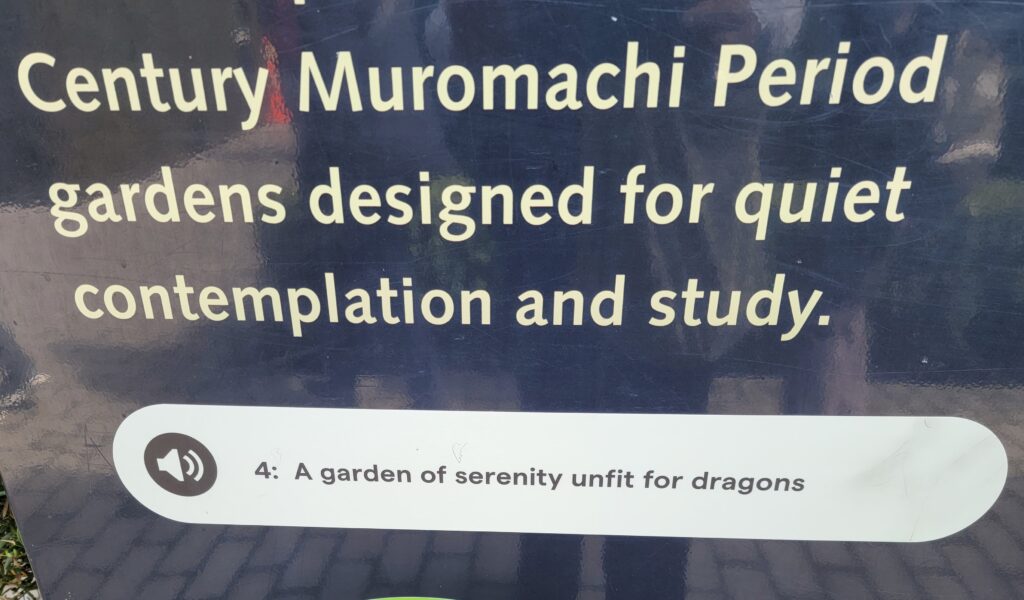

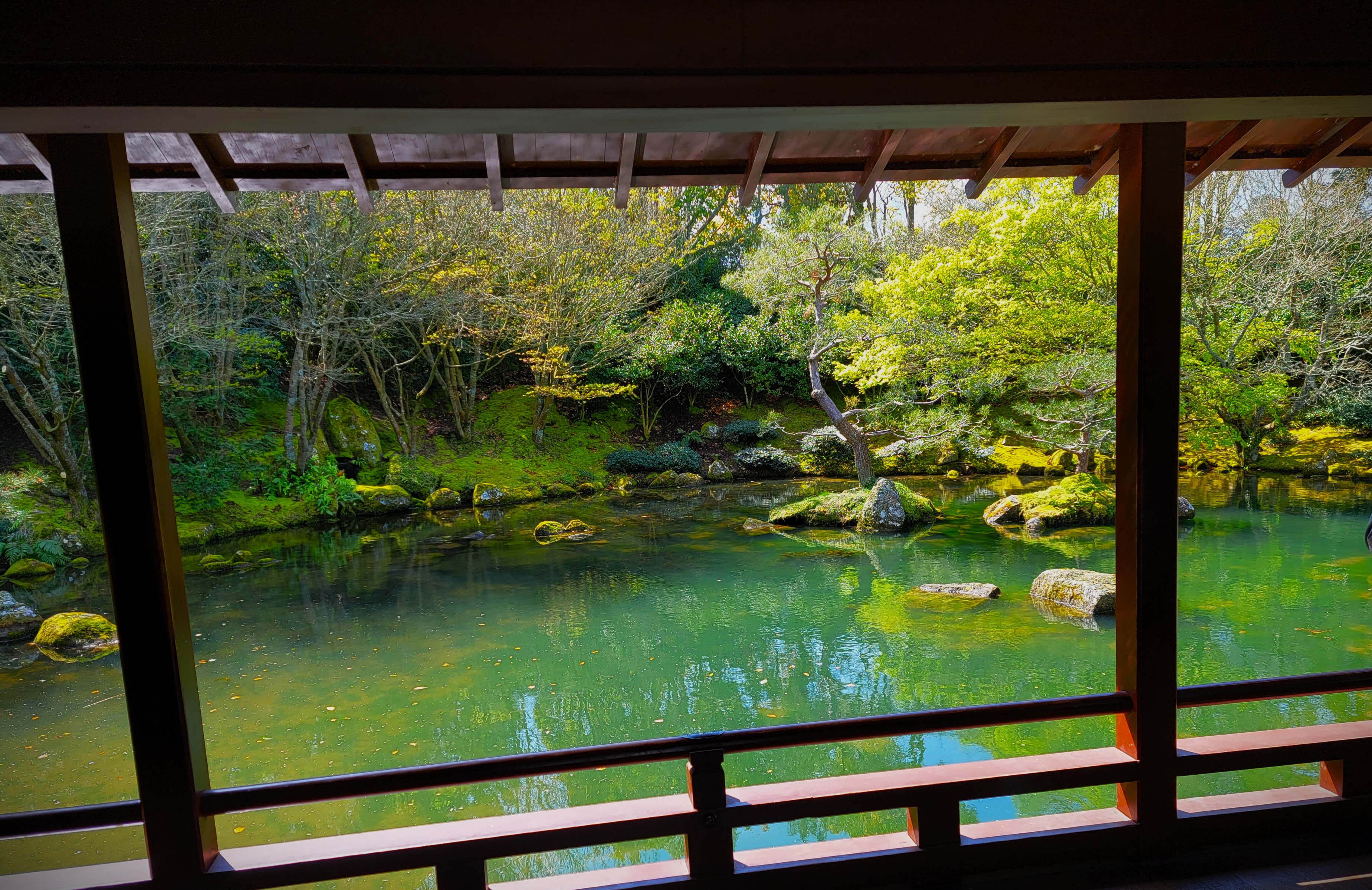
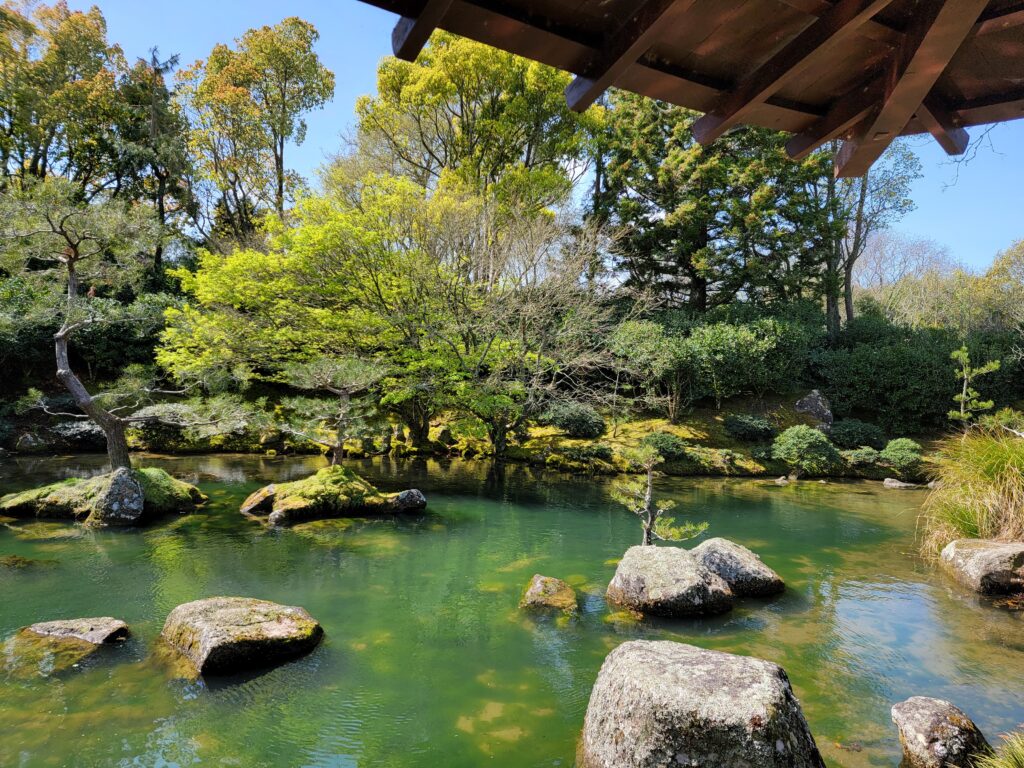
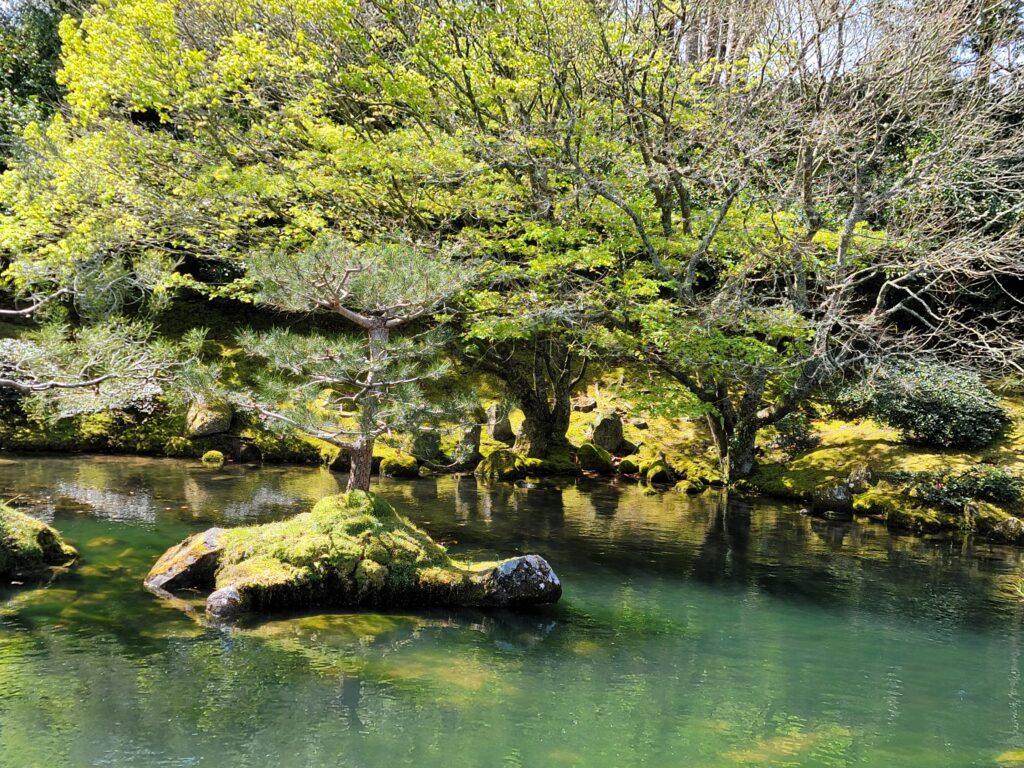
The Kiwi Encounter Conservation Project non-profit was next. It only allowed photos in an area with the taxidermied kiwis. The Hatchery is a leader in kiwi husbandry, egg incubation systems, hatching techniques, and Kiwi chick rearing.
Kiwis mate for life, and can have an 80 year life span in captivity (40 in the wild). They don’t even stick around much after the eggs are laid, which is why the eggs (and baby kiwi) are preyed upon by all the usual suspects (that were introduced by whites) – dogs, feral pigs, stoats (like a ferret) and possums. NOTE: New Zealand possums were imported from Australia to eat the slugs that the Europeans had brought over . . . they don’t look like ours in the slightest. They look like a very small kangaroo with a bushy long tail. Of course, it all worked like on the Big Island of Hawaii, where white folks brought in frogs to eat the mosquitoes. They had no predators so multiplied wildly, then something was brought in to eat the frogs (that instead ate the native birds), then ferrets were brought in to eat that . . . and on and on . . . (Remember the old margarine commercial: “It’s not nice to fool Mother Nature!” <Thunderclap>)
Dave, one of the guys in our group, said that the last time he and his wife Elizabeth were in New Zealand, they had rented a car and toured about. At one point, they ran over a rabbit that ran across the highway. When they got into the hotel, he told the concierge, who said “Thank you!” She told him that if he would like to take a few thousand home in his luggage that the country would thank him too. :-)
At the Kiwi Encounter, first we went into a “nocturnal” forest area where we had to be super quiet. The idea was to try to see some kiwi, but they were already asleep. You could see one’s “bum” sticking out the back of one of the nesting boxes! Then, we were off to one of the highlights: going into the incubation room and seeing a kiwi that was only a day or so old. They are a lot bigger than I thought (somehow I had thought that kiwis were about the size of my palm – nope!) There was also an egg that was cracking – the attendants were helping the kiwi inside, widening the crack in what we referred to as a “Kiwi C-section.”
The eggs are very heavy – and huge if you compare the size of the egg to the size of the mother kiwi! (we were told that it would be equivalent to a woman having a 35 pound baby.) No WONDER they lay the eggs and take off – letting the male kiwis take care of them! Kiwis don’t imprint – this is why the hatchery can be a success, since they raise the birds and then release them back into the wild where the egg originally came from. Kiwis can give nasty bites, scratches, and kicks – I guess it’s a labor of love!
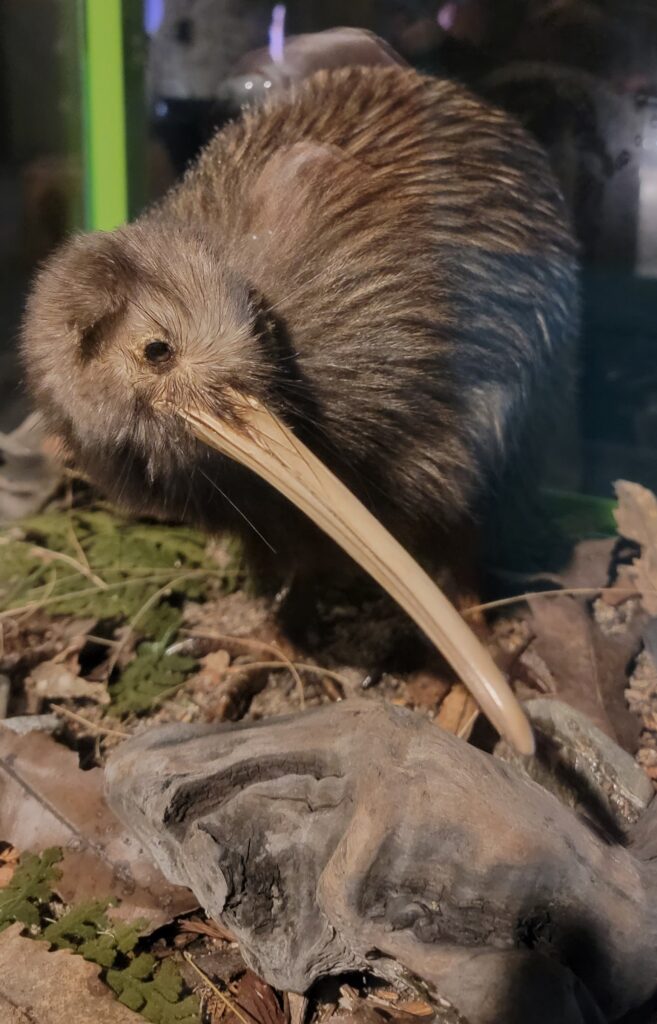
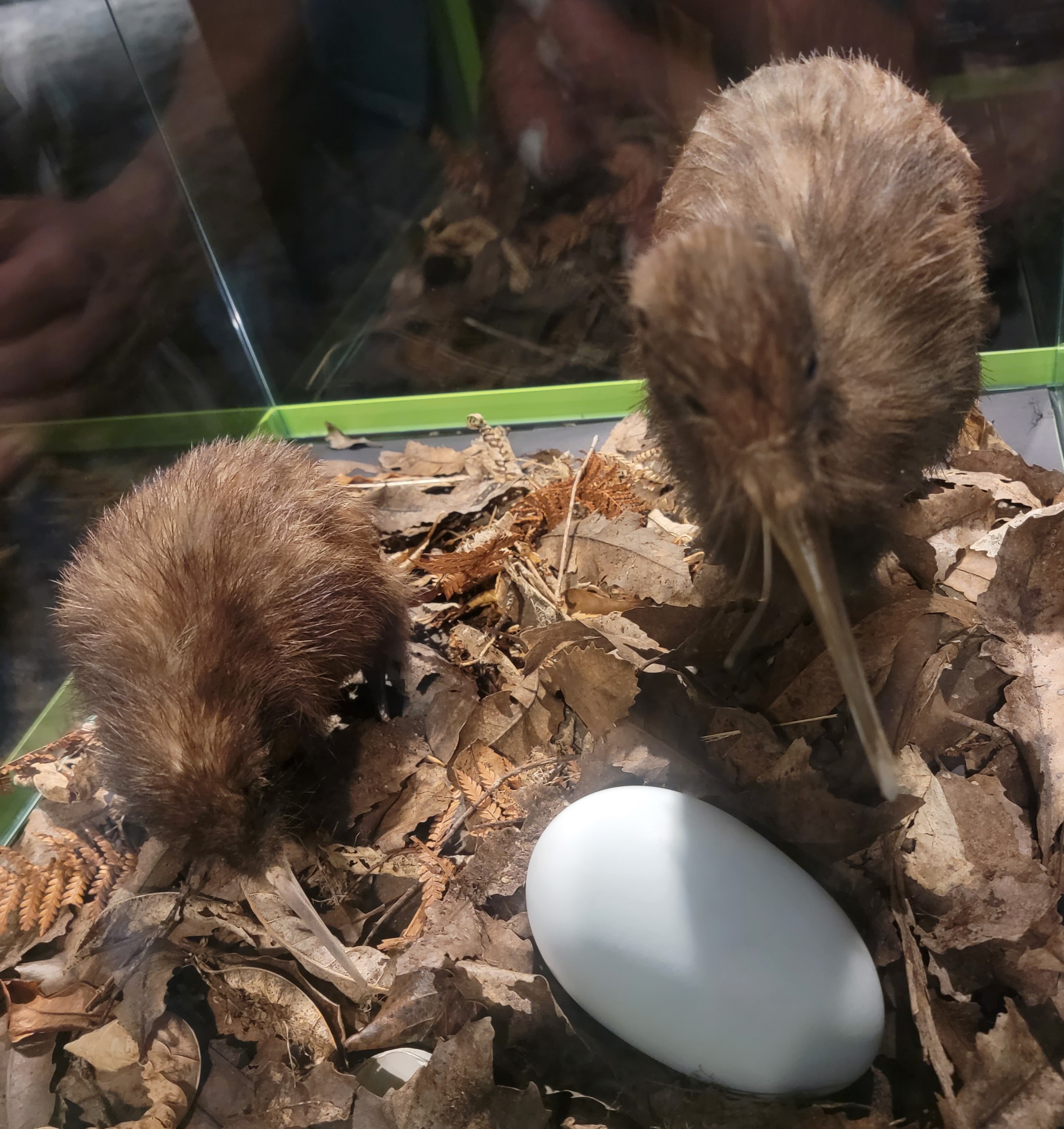
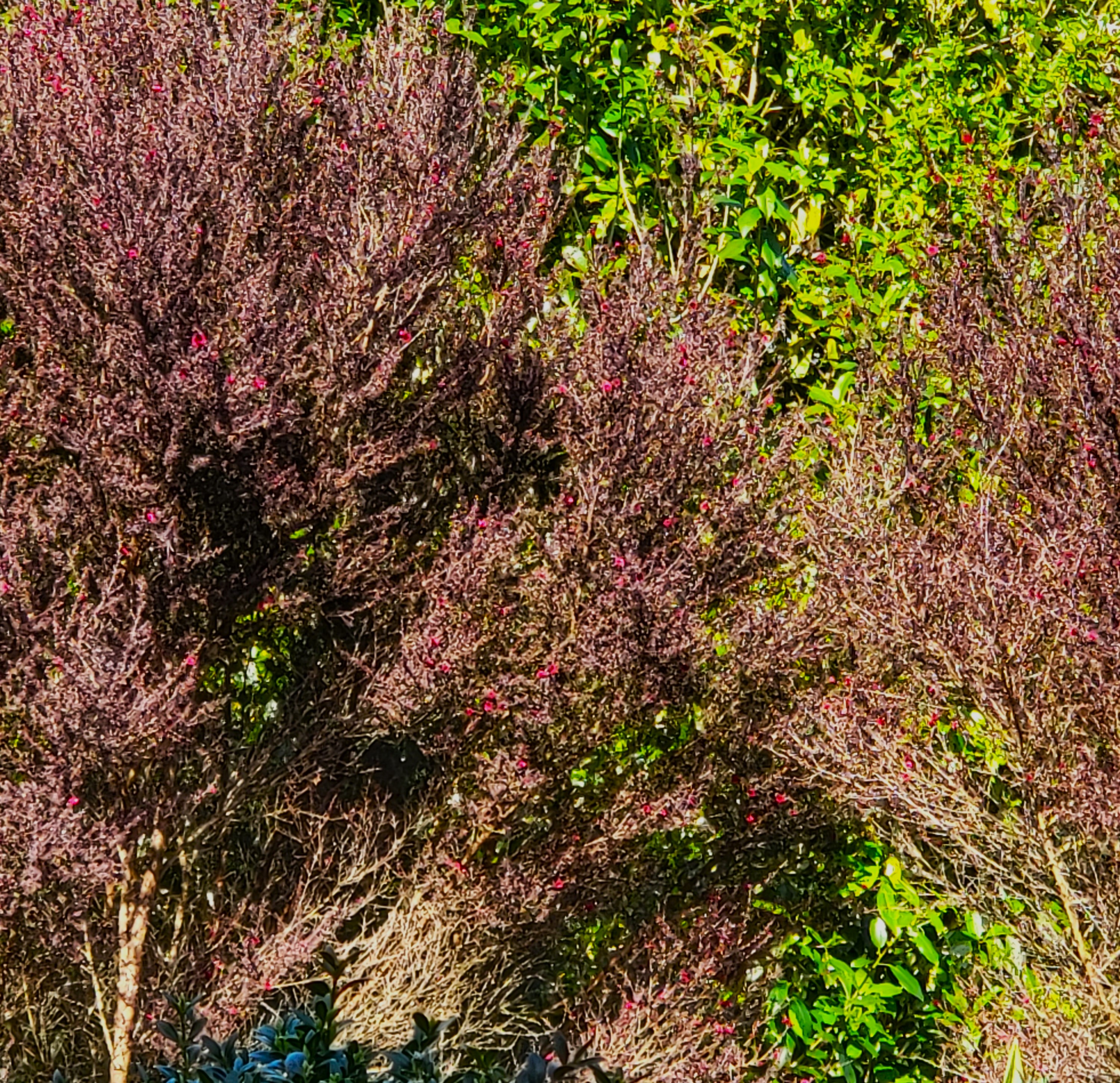
We got to our hotel in Rotorua, and Lynn scored basically what we’re calling the Queen Suite. It’s bigger than her apartment, by far. She said that this often happens when you’re at the high level she is with Overseas Adventure Travel. We now have 2 separate rooms and 2 separate bathrooms. We also have a huge sitting area, a kitchen (including a wine fridge!), a jacuzzi tub . . . :-) I just wandered to “my” bathroom and actually made a “wrong turn” on the way back to my room!
The dinner in our hotel (the Distinction Hotel) was very good. After Lynn and I shared a couple of glasses of Gimblett Gravels red (highly touted in my Sommelier classes – “If you can find one, buy it!”), time for bed! We get a “leisurely” morning tomorrow!
POSTSCRIPT: I keep getting up at 4:00 a.m. Today it was 2:30 a.m. though . . . so I decided to get this edited and published to stay “current”!
If you want $100 off, call OAT at 1-800-955-1925 and request a catalog, tell them you were referred by Sandy Shepard, customer number 3087257, and get $100 off your first trip!


